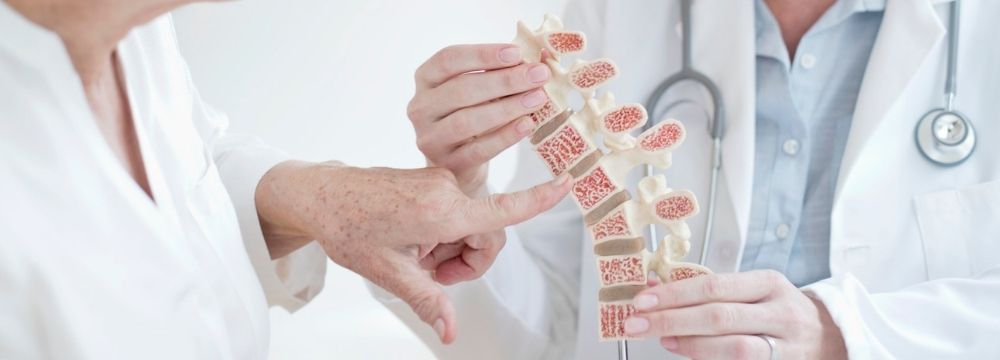The Progression From Osteopenia to Osteoporosis: What You Need to Know

The human skeleton is at the literal core of our bodies. Its most straightforward purpose is infrastructure. Unlike any building, however, this interior scaffold provides support and protection for vital organs and structures, is essential to mobility, serves as a depot for blood cell formation and essential minerals, and even has a purpose as an endocrine organ. The vitality of bone is evidenced in its strength, measurable in density, which can degrade with age.
The Risk Factors
Osteopenia is the first measurable stage of lower bone density and identifying risk factors is important. Those risks include female gender, age over 35, smaller body frames, poor diet, a sedentary lifestyle, smoking, excessive drinking, Caucasian or Asian ancestry, low mineral stores or absorptive capability, thyroid dysfunction, and exposure (especially prolonged) to steroids or chemotherapy.
Diagnosing Bone Density Issues
A valuable diagnostic tool is the dual-energy X-Ray absorptiometry (DXA/DEXA) scan to quantify Bone Mineral Density (BMD). It uses low radiation levels and is painless – patients lie down, and a scanner passes over their bodies. A DEXA scan is recommended in men or women with health risks or evidence of bone density loss. A preventative or routine DEXA scan is recommended for women over age 65 and men over age 70. After the scan, a T score is calculated based on the patient’s bone density compared to average densities. Lower scores indicate a greater loss of density.
A T score below –2.5 on the DEXA scan is a marker of Osteoporosis, a more serious state of porousness in the bone. While not a guarantee, osteoporosis increases the risk of bone fracture. Fractures may even occur with very routine activity.
While the DEXA scan can measure density itself, a Fracture Risk Assessment Tool (FRAX Questionnaire) is another gauge developed to understand risk in low bone density patients. Bone Mineral Density is a consideration. Weight and height measures assess frailty or the burden of excess weight. Advanced age, female gender, a parent with a hip fracture, current smokers, and those drinking more than three alcoholic beverages per day, steroid medications, and rheumatoid arthritis will increase the FRAX score. Patients with Type 1 diabetes, hyperthyroidism, chronic liver disease, and premature menopause (either by hormone or surgery) may be at a higher risk of bone fracture.
Lifestyle Changes to Slow the March Toward Osteoporosis
When osteopenia is identified, lifestyle modification becomes essential to reduce the risk of advancing to osteoporosis. Stop all smoking and reduce alcohol. Increasing calcium and Vitamin D through diet and supplementation may help slow bone density loss. Foods such as green vegetables, dairy products, sardines with bones, salmon, and tofu are all rich in calcium. Naturally containing Vitamin D food sources include fish and fish liver oils, beef liver, cheese, and egg yolks. Foods fortified with Vitamin D include grains and cereal, and dairy. Supplements containing both calcium and Vitamin D are commonly recommended and should be taken only with your orthopedic specialist’s advice. Exposure to sunlight also triggers Vitamin D production in your body. Walking and climbing stairs, impact or step aerobics, dance, and weight or resistance exercises apply pressure to bones, increasing bone density.
More significant measures may prevent bone density loss in the advanced stages of osteopenia trending toward osteoporosis. Physical therapy may be appropriate, and medication regimens may be considered. Bisphosphonates, antibody therapy, and hormone therapy (procalcitonin) inhibit bone resorption, which is a normal step in ‘recycling’ and replenishing bone mineral stores. Hormone replacement (estrogen and testosterone) also normalizes the resorption and replenishment cycle. All medications have side effects, so a consultation with your orthopedic surgeon or primary care physician is essential.
How Bone Density Affects Fractures
If fractures related to osteopenia occur, there is a lower threshold for surgical repair due to underlying frailty. Intramedullary devices such as metal posts and securing screws become necessary to provide infrastructure for the hips and long bones. Joint replacement may be considered if bone healing is predicted to be complicated or prolonged. In these instances, the top of the femur and its socket within the hip may be replaced with artificial appliances, which may be screwed or cemented in place. Spine vertebra fractures (compression or burst fractures) may require fusion by either bone graft and/or implant with instrumentation or injection of bone cement. Recent low bone density-related fractures predict fracture risk in other bones, especially adjacent bones. These risks are most significant within the first year or two.
Next Steps
When starting any medication or supplement regimen, all dosing recommendations are educated ‘guesses’ based on history and population averages. Therefore, consultation with an orthopedic physician and nutritionist would be a great starting point to establish a baseline of your status. This can begin with a medical history and blood work to identify vitality, mineral, cellular, and metabolite status. If these measures are not normal, discuss which supplement regimens work in their experience and for their other patients. Plan regular follow-ups, and reassess those measures regularly. Keeping a food and activity journal will provide your medical team data for detecting variables and helps track positive or negative changes.
The best strategy for osteopenia and the prevention of osteoporosis is an aggressively preventative approach. If you haven’t done so already, a good practice is establishing a relationship and regular visits with a knowledgeable Primary Care Physician before symptoms of any kind have even occurred.
Awareness, information, and education predict better general health, particularly in conditions to be prevented or identified for early intervention. Contact us to learn more about osteoporosis prevention or to evaluate your risk and start treatment for low bone mineral density.


 ES
ES